Review: Motorola Droid Maxx 2 for Verizon Wireless
Nov 15, 2015, 10:30 AM by Eric M. Zeman
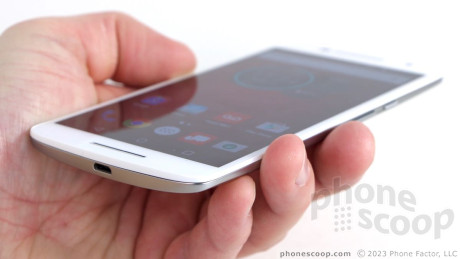
The Maxx 2 is the less expensive of Motorola's two new Droid handsets for Verizon Wireless, but it is still a competitive offering. This Android smartphone impresses with excellent build quality and a battery that delivers on Motorola's promises. If you need an Android handset that goes the distance, the Maxx 2 should be at the top of your shopping list. Here is Phone Scoop's full report.
Hardware
Is It Your Type
The Droid Maxx 2 is a significant update to the Droid Maxx and offers Verizon customers an excellent mid-range option to more expensive flagships. It boasts interchangeable rear panels, a huge battery, and rapid charging. If you're a fan of the Droid line, don't need the shatterproof Turbo 2, and desire unparalleled battery life, the Maxx 2 is worth a look.
Body
Pointing out the differences between the Droid Maxx 2, Turbo 2, and Moto X Pure Edition is tough to do from several feet away. All three phones share a significant number of design elements and features. Perhaps the biggest giveaway is that the M2 doesn't have the stylized Verizon "V" logo on the front like the T2 does. Otherwise, you're looking at a trio of phones that can easily be mistaken for one another.
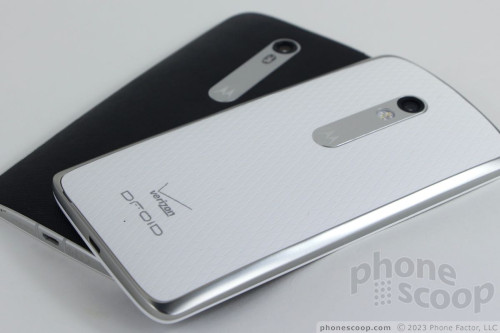
The core design includes an aluminum frame along the outer edge, white/black glass panel on front, and selectable colors for the rear. The camera module is contained in a metal housing, and the edges are tapered a bit to help the phone fit better in your hand.
Motorola isn't giving potential M2 customers quite the same level of customization as the Turbo 2. It's not available via Moto Maker; instead, you can purchase the handset and opt for additional, interchangeable rear covers. There are seven to choose from.
The Maxx 2 is a big phone, but not quite as huge as the T2 (those millimeters do count.) The display measures 5.5 inches, which puts it deep into phablet territory. It often requires two hands. I found it fits into pockets somewhat easier than the Turbo 2 thanks to the curvier contour of the rear panel. The Maxx 2 is actually 1.8mm thicker than the Turbo 2, but the shape is much slimmer at the edges, which helps tremendously. The Maxx 2 is just as heavy as the Turbo 2, which is surprising, given the standard display and slightly smaller battery.
Build quality and materials are top-notch. Everything about the M2 is fitted tightly together. I like the combination of different textures (glass, metal, and soft-grip) and the phone feels very strong.
The front surface is not too chaotic. The Maxx 2's glass is curved slightly where it joins the side edges of the metal frame. This smoothes out the seam a bit. The frame forms lips along the top and bottom edges of the glass, however. The overall feel around the edges is better on the newest Moto X.
Above the display, you'll note the selfie cam, speaker grille, and a single sensor. A second speaker grille fills the space below the screen. There are no hardware buttons on the front of the phone.
The screen lock button is located on the right side of the phone, within the metal frame. It has a nice, ribbed texture so it stands apart from the volume toggle, which is located below it. I like the travel and feedback of both these controls, but I thought the screen lock button was a little wobbly. I also wish the volume toggle were a little bit longer; that would make it easier to use. The SIM tray and headphone jack are on top. The SIM tray includes a slot for memory cards. The USB port is on the bottom.
The Maxx 2's camera module closely resembles that of the Moto X; it is a metal ellipse with the camera lens at one end and the indented Motorola logo at the other. The two-tone flash is in between.
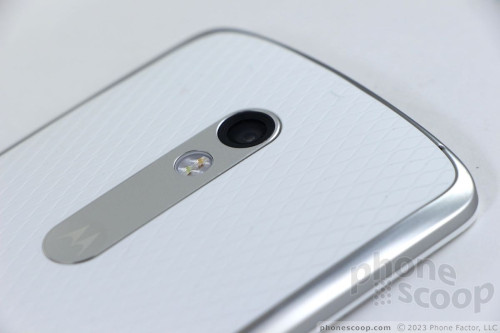
As noted, the soft-grip rear cover snaps off in order to customize the look, but there's nothing accessible beneath it; the battery is sealed in tight. The panel has a wavy design on it that adds texture. I found I was able to hold onto the phone tightly even when going for a jog.
The Maxx 2 is water-resistant thanks to a nanocoating spritzed across the phone's innards. This is standard fare for a Motorola handset. It can handle sweat, rain, and some light splashing, but it won't be happy about going for a swim. Keep it out of the pool.
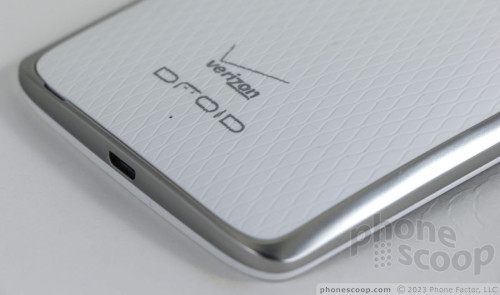
The Maxx 2 is a fine piece of hardware.
Screen
The biggest difference between the Turbo 2 and the Maxx 2 is the display. The Turbo 2 has a 5.4-inch, quad HD AMOLED screen protected by Motorola's ShatterShield. The Maxx 2 has a 5.5-inch full HD LCD panel protected by Gorilla Glass. In other words, the Maxx 2 has the more standard screen.
The Maxx 2's LCD panel produces significantly more light than the Turbo 2's AMOLED screen, and even though it has fewer pixels, the M2's display is clearer and sharper to the naked eye. The Turbo 2's ShatterShield technology has negative trade-offs in brightness and sharpness. The result is that the Maxx 2's screen looks better, despite its technically inferior specs. I was able to use it indoors and out with no problem, and viewing angles are good for an LCD screen.
Signal
The Maxx 2 maintained a tight connection to Verizon's network in and around New York City. The phone consistently connected calls on the first dial, even in areas with weak coverage. The M2 did not drop nor miss any calls while I reviewed it, and the phone kept a call going at highway speeds without problem.
Data performance was solid across LTE networks. I was not disappointed with its performance and found the M2 great for everyday use when surfing the web, browsing through Facebook, and watching YouTube videos. The Maxx 2 performs at the same level most handsets do on Verizon's network.
Sound
The Maxx 2 is a mediocre voice phone. When calls are made the old-fashioned way over Verizon's legacy voice network, earpiece volume was lacking and quality was muddy at best. I was able to understand calls in my home and stationary car, but coffee shops, restaurants, and other public spaces easily overpowered the anemic amplifier in the earpiece. I'd have been less disappointed if clarity was good, but it's not.
The speakerphone is worse. Volume and clarity go downhill a bit. I was not able to hold a conversation in a moving car, for example.
Things improve a bit when you connect calls over LTE using Verizon's HD Voice service. Earpiece and speakerphone volume isn't any better, but clarity is much better. In order for HD calls to work, both parties need to have LTE coverage and Verizon's Advanced Calling app on board.
Ringers and alerts are good enough, and the vibrate always got my attention.
Battery
The Droid Maxx is called the Droid Maxx because it offers maximum battery life. The phone has an incredible 3,630 mAh power supply. While that's a bit smaller than the Turbo 2's battery, the Maxx's less-hungry processor and lower-resolution screen help deliver better battery life. Motorola claims the Maxx 2 can remain up and running for 48 hours. According to my mixed usage tests, that's about accurate. It easily outlasted the Turbo 2 by 4 or 5 hours. The Maxx 2 lasted from breakfast one day to bedtime the next. This is about as good as you're going to get from any modern smartphone.
The M2 supports rapid charging, but not wireless charging. The TurboCharger that ships with the phone can deliver 7 hours of battery life in just 10 minutes. In other words, the M2 doesn't need to be plugged in all that often.
Motorola didn't bother to give the M2 an advanced battery saver tool; instead, it ships only with the Android system battery saver, which can be controlled manually to reduce power consumption.
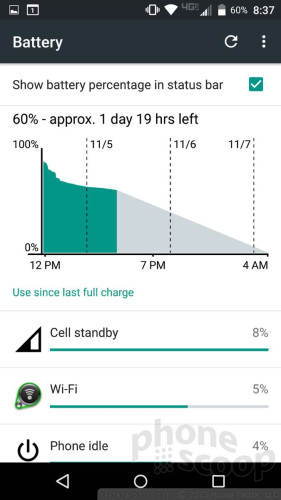
Bluetooth, GPS, NFC, WiFi
The M2 includes the usual selection of radios for connecting to various devices and networks. The Bluetooth radio functioned perfectly as far as pairing with and connecting to speakers and headphones was concerned. Calls were pretty rough via Bluetooth in my car. Music sounded good through my favorite Bluetooth speaker, however. The NFC radio worked great for aiding Bluetooth pairings.
Together with Google Maps, the M2's GPS radio located me quickly and accurately. The WiFi radio didn't give me any trouble whatsoever.
Software
Editor's Note: The Maxx 2 runs the exact same version of Android as the Turbo 2, and includes the same apps/services from Verizon Wireless. Portions of the text below have been carried over from our review of the Turbo 2. Every aspect of the Maxx 2 was assessed fully and the text has been adjusted to reflect any differences.
Lock Screen
Motorola offers one of the most useful lock screens in the market. There are three basic settings. Moto Display shows important notifications as simple, interactive icons on the lock screen. Ambient Display wakes the screen regularly with a list of the current notifications in a more detailed way. Last, users can choose to leave the screen dark at all times.
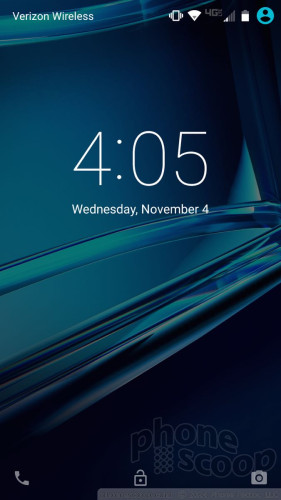
The big difference between Moto Display and Ambient Display is what you see on the lock screen. With Moto Display enabled, you'll see the Gmail logo when a new Gmail arrives, or the SMS logo when a new text arrives. That's all. With Ambient Display, you'll see the exact number of Gmails or text messages you have, and who the most recent one is from. Whichever you choose, the notifications arrive and repeat once and then go away. The clock is displayed whenever notifications arrive. The M2 is smart enough to keep the screen dark when it senses that the phone is in your pocket or purse, or face down.
As a slightly more affordable model, the Maxx 2 doesn't have the motion detectors available on the higher-end Turbo 2 and Moto X. That means you can't wake the screen by waving your hand over it. Bummer.
M2 owners can train the phone to wake at the sound of their voice. When it hears the catch phrase, the phone will turn on and obey commands when spoken to. For example, you can ask it to read incoming messages, send replies, and so on.
Pressing the screen lock button wakes the display to show the clock, wallpaper, and notifications. There are shortcuts to the phone and camera available on this screen.
Motorola is leading the field as far as lock screen notifications are concerned.
Home Screens
The Droid Maxx 2 ships with Android 5.1 Lollipop. Owners of the phone can customize the typical stuff, such as wallpapers, widgets, and so on. The M2 does not employ the Google Now launcher, and instead uses a simple home screen setup. The two active home screens and notification shade behave as expected for a Lollipop device.
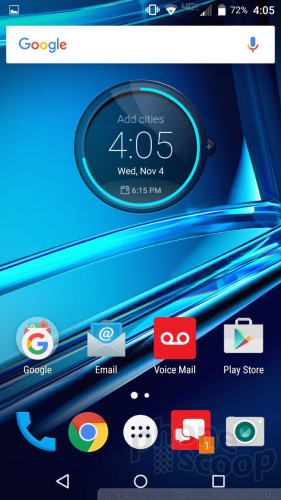
On a stock Android device, the application drawer is configured vertically with four app suggestions at the top. The M2 skips this in favor of a horizontal arrangement with no app suggestions. This means you swipe the app drawer from side-to-side rather than up and down. I like the vertical layout better. The settings menus look and behave exactly as other Lollipop handsets.
Thankfully, the M2 includes the Moto application. This tool bundles together a handful of functions. The Moto app controls Ambient Display / Moto Display. It also manages the Moto Assist function, which is used for changing Do Not Disturb settings based on location and calendar. Last, it can handle some gesture-based controls. For example, a quick turn of the wrist will launch the camera, and a quick shake of the phone will launch the camera and immediately fire off a photo.
As for performance, the M2 uses a 1.7GHz octa-core Snapdragon 615 processor with 2 GB of RAM. This is Qualcomm's mid-range processor. (The T2 has Qualcomm's high-end Snapdragon 810.) I found the M2 was plenty fast. I saw no problems during my tests of the handset, which was quick to open apps and transition between screens.
Camera
The M2 uses the same camera app found on the Moto X. It is a simple affair, but has some strengths.
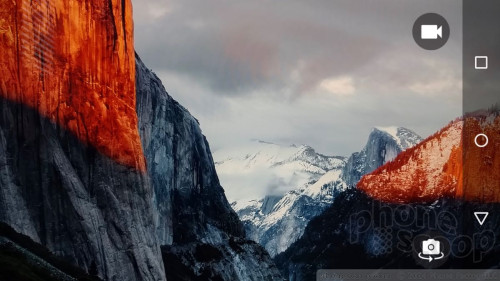
Without a dedicated camera button, I've come to rely on the wrist-twisting gesture that opens the M2's camera. This is the fastest way to launch the camera, but it takes some training to get used to. You may also open the camera from the lock screen or app shortcut.
There are only two buttons: one for the video camera and another for the user-facing camera. The other controls can only be accessed by swiping from the left side of the viewfinder towards the center.
The settings are arranged in a rotating dial. The M2 includes HDR, flash, touch-to-focus, and panorama features — plus some minor settings — all in this single dial. The HDR mode and flash can be set to on, off, or automatic. The remaining options can be set to on or off. These shooting modes and tools all behave as you'd expect them to.
The M2 has an always-on burst mode. Press the screen and hold, and the M2 will focus and then capture images continuously until you take your finger off the screen.
The camera app, in all its simplicity, does not let users adjust ISO, brightness, or white balance. Nor does the camera include filters or fancy shooting modes. It's a basic shooter, more in line with the features found in Apple's camera than those from LG and Samsung, which tend to cram functionality into their camera apps.
In terms of performance, the M2's camera is a hair slower than the T2's camera, but still quick enough. I didn't find myself frustrated with its speed. It opens swiftly, and focuses/captures images in short order.
Photos/Video
The M2 has the same 21-megapixel sensor as the T2 and Moto X and I'd say performance is the same (as it should be). The images are generally sharp and have accurate exposure and white balance. Not every images is perfect, but the vast majority are good enough given the conditions in which they were shot. I was particularly pleased with color accuracy. Low light performance was much better than past Motorola cameras, which were notoriously awful in poor lighting.
Most people can rely on the M2 as their main camera for general photography. Enthusiasts may still prefer dedicated equipment, but the M2 is certainly good enough for the masses. Moreover, the M2 compares favorably to other ~$400 handsets in Verizon's lineup (which are mostly last year's flagship phones).
The M2's front-facing camera captures 5-megapixel images and has a wide angle field of view. As with the main imager, I was pleased with the results. Shots taken outdoors looked very good, and the selfie flash definitely helps in low-light environments.
The video camera does a very good job capturing 1080p HD video. (Feel free to skip the 4K video capture mode.) The phone did a great job with focus, exposure, and white balance. The video footage I captured looked very good when blown up on my monitor. The M2 also captures slo-mo video in 720p resolution. The results are about as good as you'd expect.
I'd happily use the M2 for daily video needs.
Bloatware
OMG, Verizon. OMG.
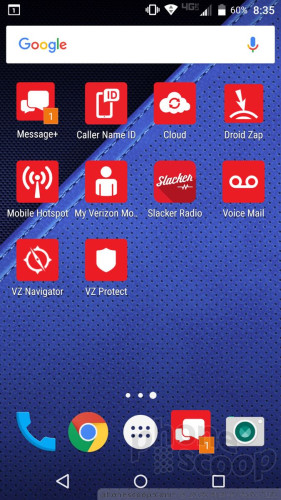
There are new fewer than 22 junk apps on board the M2, Verizon jammed an unforgivable amount of bloatware onto the M2, and most of it cannot be deleted (nor even hidden). Four games consume a staggering 300MB of storage. As it so happens, these are the only four pre-loaded apps that can be fully deleted. For shame, Verizon.
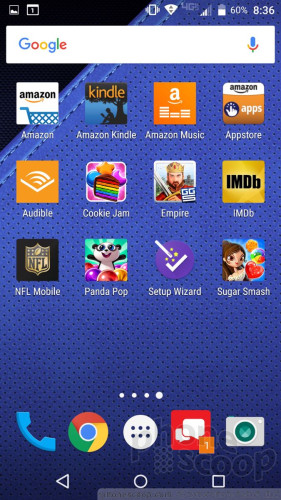
Wrap-Up
The Motorola Droid Maxx 2 is a bargain. It may lack the Turbo 2's impressive break-proof screen, but it performs at nearly the same high level in every other way.
The Maxx 2 clearly comes from Motorola's design team and is an attractive phone with great materials and build quality. Toss in the interchangeable rear shells and you can add just a bit of personality. The display doesn't boast Motorola's ShatterShield, but it is brighter and more attractive to the eye. Signal performance was excellent, though voice calls left me disappointed.
The battery is crazy good. The 3,630 mAh power cell pushes the phone from morning to night to morning to night again, which is vastly better than most phones today.
Android 5.1 is a solid platform, though I wish Verizon hadn't gummed it up so much with bloatware. Perhaps most importantly, the camera is quick and takes good pictures.
The Droid Maxx 2 costs $384 at full price, or about $16 per month on an installment plan. That's $250 less than the Turbo 2, and $275 less than many flagships. The Maxx 2 more than fills that gap with solid all-around performance. If you're shopping for a mid-range handset on Verizon's network, the Maxx 2 offer maximum value for the dollar.

Comments
No messages


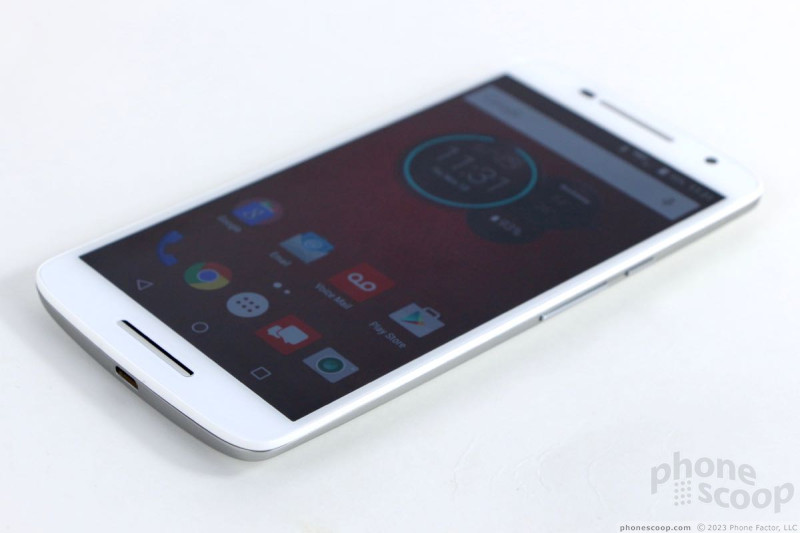

















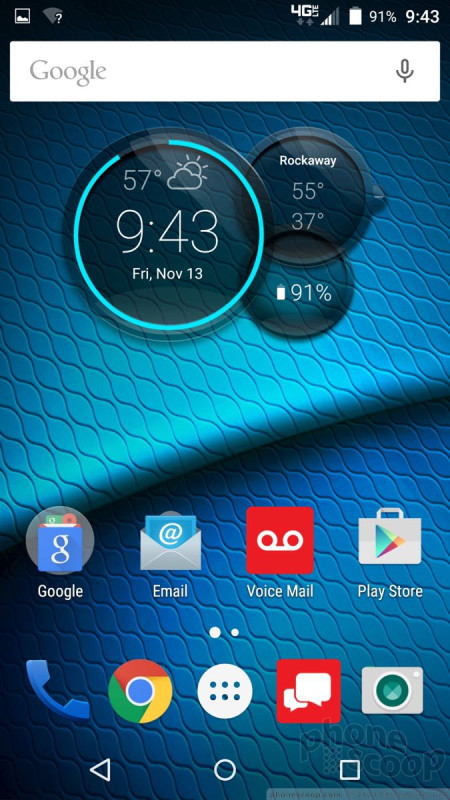









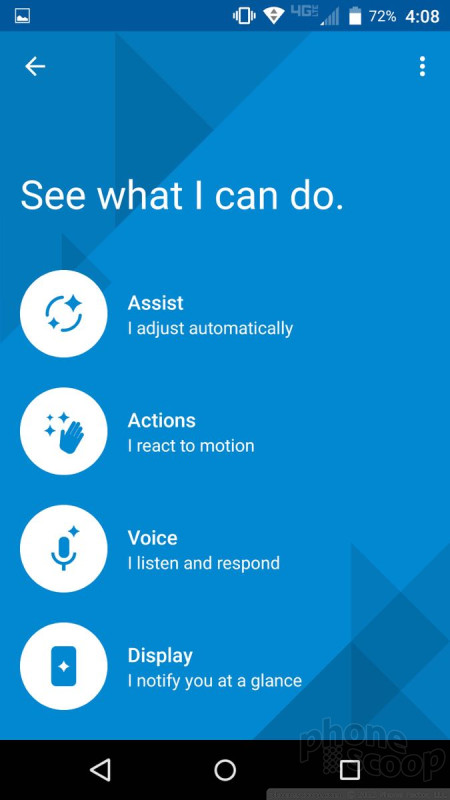







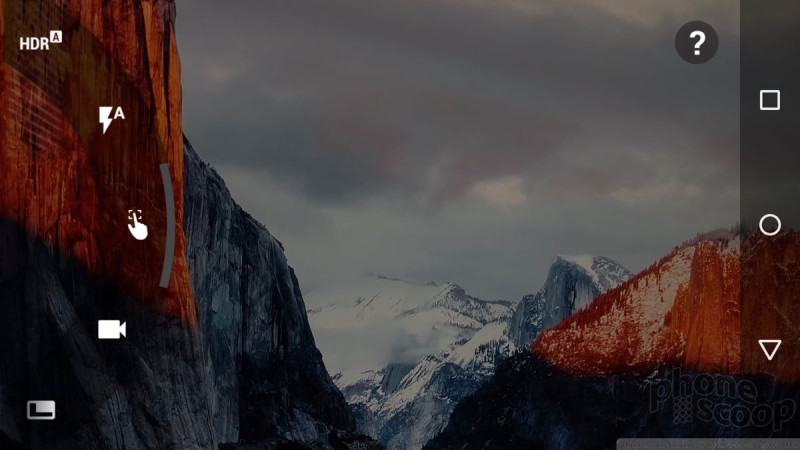

















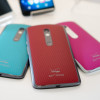 Hands On with the Motorola Droid Maxx 2 for Verizon
Hands On with the Motorola Droid Maxx 2 for Verizon
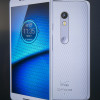 Droid Maxx 2 Boasts 2-Day Battery Life
Droid Maxx 2 Boasts 2-Day Battery Life
 iPhone 15 Series Goes All-In on USB-C and Dynamic Island
iPhone 15 Series Goes All-In on USB-C and Dynamic Island
 iPhone 16 Brings More Features to All Price Points, Including New Camera Control
iPhone 16 Brings More Features to All Price Points, Including New Camera Control
 Motorola Refreshes moto g power for 2026
Motorola Refreshes moto g power for 2026
 Motorola Droid Maxx 2
Motorola Droid Maxx 2










